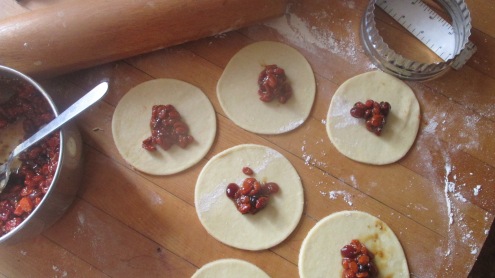
Last weekend I was incredibly moved to be in the presence of seeds descended from those which Vavilov and his colleagues saved under wartime duress (i.e. a Stalinist prison, and starvation). These were exhibited as part of the Artes Mundi exhibition at National Museum Cardiff in which the Futurefarmers collective of artists installed visuals to their “Seed Journey” exploration of the history and future of seeds as part of our common heritage. Amy Franceschini explains some of the project in this video below:
A few days later I found myself working at an event where Anne Parry of Felin Galon Watermill was speaking on behalf of her visionary efforts to network farmers, millers, brewers and bakers around “Welsh Grain.” We talked a bit about the Cardiff exhibition, and she shared that some Welsh grown wheat had gone off on the sea-faring adventures of FutureFarmers.
So exciting! I went home and wrote to Anne, asking if she could write a paragraph for this blog, sharing the story. And she responded:
“As part of their Seed Journey the Flatbread Society were meeting with Andy Forbes of the Brockwell Bake in London. The Welsh Grain Forum has been collaborating with Andy, who is wonderfully knowledgeable and committed, to reintroduce the wheat Hen Gymro back to Wales….so since The Seed Journey group were travelling to Cardiff it seemed appropriate that we celebrate this by them symbolically bringing us a sheaf of Hen Gymro from Andy when they came up to Cardiff. (Pics from the Brockwell Bake gallery here). About half a dozen WGF members were able to be there and it turned out to be a simple, inspiring and encouraging event where we received the wheat, gave them samples of Hen Gymro grown once more in Wales, and other Welsh grown heritage cereals, to take on their journey and then shared bread and cakes baked with our locally grown and milled flour. There’s something about the it by Artes Mundi here , and stuff on our Welsh Grain Workshop page and on Rupert Dunn’s Torth y Tir page.”
Really wanted to share this wonderful story which gives Hen Gymro an epic adventure, its itself part of the whole global Story of seeds, grain, people, history.
And now, a moment with Johnny Cash, and an affecting photomontage:











